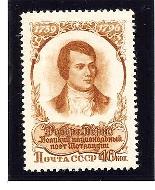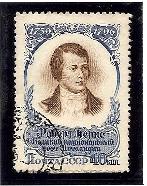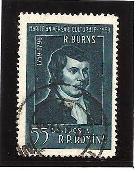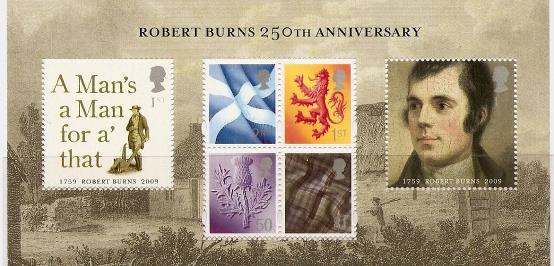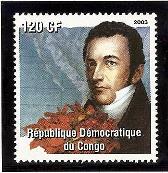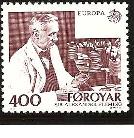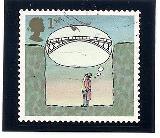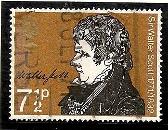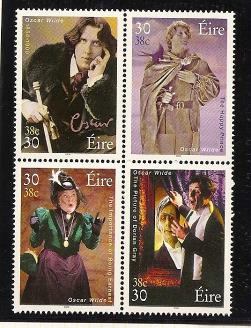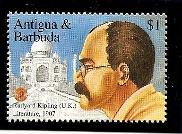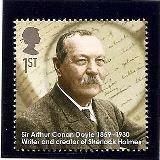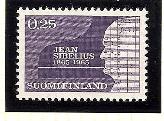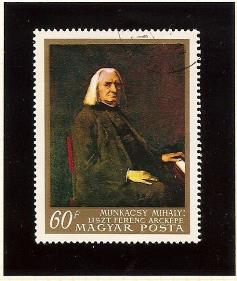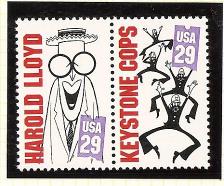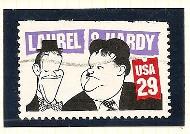



|
Did you know? Masonic Philately |

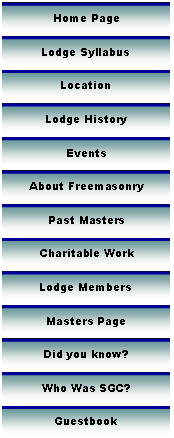

|
Sir George Cathcart No. 617 |
|
Robert Burns (1759-1796)
The Burns Supper Season is now in full swing and of course I had to feature those stamps issued to remember the man. I thought long and hard before I presented the stamps of possibly one of the most famous Freemasons ever, and now you see why, one and a half lines and I may have people disputing my claim. But why should I say anything at all about this genius because better scholars than I have written millions of words about him so I shall restrict myself to a resume of his Masonic history but once again this is clouded by claims and counter claims. The following is a result of listening to many talks and reading many books I hope I have done justice to his memory.
It must remembered these were very different times from now and Mother Kilwinning was as powerful as G.L.of Scotland although the influence of M.K.0. was starting to decline and some Lodges were deciding to give up their Kilwinning charter to join Grand Lodge. Consequently Lodge Names and Lodge Nos. changed and some lodges amalgamated. It should also be noted that the Office of Depute Master was in fact the Office that we today would recognise as R.W.M. as in those days “The Master” was usually the local Lord or Laird who accepted this as an honorary position and left the Depute Master to do the work.
17th May 1771 Lodge Tarbolton Kilwinning No73 received its Charter from The Mother Lodge. 20 of the brethren decided that they would prefer to be under the jurisdiction of Grand Lodge their petition was successful and on 5th February 1773 St. Davids Tarbolton No. 174 received its Charter from Grand Lodge of Scotland.
Those Brethren who were left in Tarbolton Kilwinning eventually came round to the same decision and In 1774 a new Lodge was formed St James Tarbolton No. 178 However the village of Tarbolton was too small to sustain two Lodges and it was agreed to put their differences aside and on 25th June 1781 the two Lodges combined under the name of Lodge St David Tarbolton No.174
Burns was one of the first Initiates of this united Lodge (Lodge St David Tarbolton No 174) He was Entered 4th July 1781, and Passed and Raised 1st October 1781
This union of Lodges did not prove to be a happy one and a few months after its formation there was another separation! 17TH June 1782 St James Tarbolton reformed (now Lodge Tarbolton Kilwinning St. James No.135) 27th July 1784 Burns was elected Depute Master of St. James and served for four years. 1843 Lodge St. David became dormant 1869 Lodge St. David reopened as No.133 with Mauchline as its meeting place 27th March 1786 Burns was “admitted a member” of Lodge Louden Kilwinning Newmilns 26th October 1786 made an Honorary of Kilmarnock Kilwinning St. John No.24 1787 Affiliated to Lodge Cannongate Kilwinning
19th May 1787 Exalted a Royal Arch Mason in the premises of Lodge St. Ebbs Eyemouth 1788 He affiliated to Lodge St. Andrew Dumfries No. 179 and served this Lodge as Senior Warden in 1792-93 |
|
First Stamp Issued in recognition of Robert Burns
Stamp Issued :- Russia 1956 S.G. No2001
Bicentenary of the Birth of Robert Burns
Stamps Issued:- Russia 1959 S.G.No. 2310 Rumania 1959 S.G.No. 2634
|
|
Robert Burns Commemoration Stamps
Stamps Issued Great Britain 1966 S.G. No. 685/6
Bi-Centenary of Robert Burns Death
Stamps Issued Great Britain 1996 S.G. Nos.1901/04 |
|
250th Anniversary of the Birth of Robert Burns
Stamps Issued:- Great Britain 2009 Miniature Sheet
The Issue of these stamps now makes Burns the most celebrated person on British stamps outside of our Royal Family |
|
Joel R. Poinsett (1779-1851)
U.S. Secretary of War and Minister to Mexico
Did you have a “Poinsettia” plant in your house over Christmas? They seemed to be everywhere. We have Bro. Joel R. Poinsett to thank for this .On his return from Mexico he brought back a beautiful flowering shrub which had struck his fancy, he developed it and improved it on his plantation and thereby immortalised his name in the plant world, previously it had been called “painted leaf” or “Mexican Fire Plant” Now it is officially Poinsetta pulcherrima
Bro. Joel was a Past Master of both, Recovery Lodge No. 31 Greenville S. Carolina and Solomon’s Lodge No. 1 Charleston S. Carolina. In 1821 he was elected Deputy Grand Master of the Grand Lodge of South Carolina. He was unable to serve as Grand Master due to his appointment as Secretary of War (1837-41) 1821-41 he was Grand High Priest of the Grand Chapter of South Carolina. 1849 Upon the revival of Greenville Lodge No. 5 he served as R.W.M..
Stamp Issued: - Republic of Congo |
|
Sir Alexander Fleming. (1881–1955) Scottish Bacteriologist and Nobel Prize Winner
Fleming discovered the first antibiotic drug, penicillin, in 1928. In 1922 he had discovered lysozyme, an antibacterial enzyme present in saliva, nasal secretions, and tears. While studying this, he found an unusual mould growing on a neglected culture dish, which he isolated and grew into a pure culture; this led to his discovery of penicillin. It came into use in 1941. In 1945 he won the Nobel Prize for Physiology or Medicine with Howard W Florey and Ernst B Chain, whose research had brought widespread realisation of the value of penicillin. Fleming was born in Lochfield, Darvel, Ayrshire, and studied medicine at St Mary's Hospital, London, where he remained in the bacteriology department for his entire career, becoming professor 1928. Fleming discovered the antibacterial properties of penicillin, but its purification and concentration was left to Florey and Chain, in Oxford. Fleming also developed methods, which are still in use, of staining spores and flagella of bacteria.
The previous information I am sure is well known but what is not so well known is that Bro Fleming, had he claimed the rights to Penicillin could have become one of the richest men in the world, instead he established the name “Penicillin”as a scientific term thus making it public property. Countless people owe their lives to Penicillin and to Fleming for ensuring it was freely available to all and not just those who could afford it.
A truly Masonic act.
Bro. Fleming was a member of Sancta Maria Lodge No.2682. Initiated:-8th June 1909, Passed:- 9th Nov. 1909 and Raised:- 11th Jan 1910 The records show he was S.W. in 1922 and 1923 and on 11th Nov. 1924 was Installed as R.W.M. He was also a member of Scottish Rifles Lodge No.2310.(Joined 16th March 1911) He later joined Misericordia Lodge No.3286 London.(Joined 23rd. Oct. 1925) And served as J.W. 1932, S.W. 1933 and 1934. And was Installed R.W.M. 1935 Note:- Misericordia means Mercy, forgiveness or tender-hearted.
He became Grand Senior Deacon in 1942 and Past Junior Grand Warden in 1948.
He also became a Royal Arch Freemason and joined Aesculpius Chapter No.2410 on 27th July1923. He held the Offices of 3rd Principle in 1937, 2nd Principle in 1938, 1st Principle in 1939. Aesculpius means The Art of Healing
Stamps Issued:- Too Many to list I have shown Faroe Islands 1983 S.G. No.84.
If I have interested you in Sir Alexander Fleming why not pay a visit to Lodge Sir George Cathcart No617 on Wednesday the 4th May when Bro. Archie Chalmers P.G.M. of Ayrshire will be presenting a paper “Sir Alexander Fleming The Man and Mason” |
|
Sir Thomas Telford. (1757–1834) Scottish Civil Engineer. Operative and Speculative Mason
Nicknamed “The Collossus of Roads”but told everyone to call him “Tammy” Telford opened up Northern Scotland by building roads and waterways. He constructed many aqueducts and canals, including the Caledonian Canal 1802–23, and erected the Menai road suspension bridge 1819–26, a type of structure scarcely tried previously in England. In Scotland he constructed over 1,600 km/1,000 ml of road and 1,200 bridges, churches, and harbours.
In 1963 the new town of Telford, Shropshire, 32 km/20 ml NW of Birmingham, was named after him, and a local roundabout has as its centrepiece a large copy of Telfords Masons Mark.
Telford was born in Westerkirk, Dumfries, and began as a stonemason. Moving to London, he found employment building additions to Somerset House in the Strand under the supervision of architect William Chambers. Recognising his talents, the rich and famous were soon consulting him about their own buildings.
In 1786, Telford was appointed official surveyor to the county of Shropshire. There he built three bridges over the river Severn, among other structures. He also rebuilt many Roman roads to meet the need for faster travel.
As engineer to the Ellesmere Canal Company from 1793, Telford was responsible for the building of aqueducts over the Ceirog and Dee valleys in Wales, using a new method of construction consisting of troughs made from cast-iron plates and fixed in masonry.
Bro. Thomas was a member of Salopian Lodge. No.262 E.C.
Stamps Issued:- G.B. 2007 Telford is depicted visualising a new bridge |
|
John Loudoun McAdam. (1756–1836) Scottish Engineer
Born in Ayr, and following the death of his father, he lived with an uncle in New York City. He became a merchant but sided with the British at the time of the American war of Independence and returned to Scotland in 1783, where he purchased an estate in Ayrshire and began his experiments in road construction. Inventor of the Macadam road surface. It originally consisted of broken granite bound together with slag or gravel, raised for drainage. Today, it is bound with tar or asphalt. McAdam introduced a method of road building that raised the road above the surrounding terrain, compounding a surface of small stones bound with gravel on a firm base of large stones. A camber, making the road slightly convex in section, ensured that rainwater rapidly drained off the road and did not penetrate the foundation. By the end of the 19th century, most of the main roads in Europe were built in this way. McAdam was born in Ayr. Immigrating to the USA at 14, he returned to the UK 1783. He was appointed paving commissioner in Bristol in 1806; ten years later he became surveyor-general of the roads in that region, and of all the roads in Britain 1827. McAdam was also responsible for reforms in road administration, and advised many turnpike trusts. He ensured that public roads became the responsibility of the government, financed out of taxes for the benefit of everyone.
Bro. John was an Affiliate member of Ayr Kilwinning Lodge No 123,* Date of Affillation 9th December 1789, He was elected and installed as R.W.M. 27th December 1790 and again in 27th December 1791 The details of his Mother Lodge do not seem to be recorded.
Stamps Issued:- G.B. 2009
*Originally chartered in 1765 by Mother Kilwinning with charter No 65, known as The Squaremen Ayrs Kilwinning Lodge No. 65 at Ayr The later charter from The Grand Lodge of Scotland was numbered 123 |
|
Sir Walter Scott. (1771–1832) Scottish Novelist and Poet.
He gained a European reputation for his historical novels such as Waverley 1814, The Heart of Midlothian 1818, and Ivanhoe 1819, all published anonymously. His last years were marked by frantic writing to pay off his debts, after the bankruptcy of the printing and publishing business of which he was a partner.
He was created a baronet 1820. Scott exerted a strong influence on the imaginative life of his country. He stimulated an interest in Scottish history and materially affected the literary movement of his time. Scott was born in Edinburgh. He was crippled for life following an early attack of poliomyelitis. Educated at Edinburgh University, he became a lawyer, and in 1799 was appointed a sheriff-depute of Selkirkshire.
In 1820 Scott was elected president of the Royal Society of Scotland.
In 1826 he was involved in financial ruin through the bankruptcy of Constable, his chief publisher, with whom fell Ballantyne & Co, the firm of printers and publishers in which Scott had been for many years a partner. How far Scott was legally responsible is a matter of controversy, but he felt himself under a moral obligation to satisfy the firm's creditors, and at the age of 55 set himself the heroic task of paying off the enormous debt of £114,000. The Fair Maid of Perth, Tales of a Grandfather 1828–31 (a history of Scotland), and Letters on Demonology and Witchcraft 1830 are among the chief products of these last painful years; his last two novels, Castle Dangerous 1832 and Count Robert of Paris 1832, are much inferior. Continuous overwork ended in a nervous breakdown and he died at Abbotsford 21 Sept 1832 and was buried in Dryburgh Abbey. The last outstanding liabilities were cleared after his death on the security of copyrights. His Journal 1825–1832, issued 1890, is a moving record of his intimate thoughts under the burden of his latter years.
Bro. Walter was a member of Lodge St. David No.30 in Edinburgh. He received his degrees in 1801 In 1823 he was invited to become Grand Master of Knights Templar of Scotland but had to decline because of ill health.
Stamps Issued:- Great Britain 1971 S.G. No. 886. |
|
Oscar Wilde. (Fingal O'Flahertie Wills) (1854–1900) Irish writer.
With his flamboyant style and quotable conversation, he dazzled London society and, on his lecture tour 1882, the USA. He published his only novel, The Picture of Dorian Gray, 1891, followed by a series of sharp comedies, including A Woman of No Importance 1893 and The Importance of Being Earnest 1895. In 1895 he was imprisoned for two years for homosexual offences; he died in exile. Wilde was born in Dublin and studied at Dublin and Oxford, where he became known as a supporter of the Aesthetic movement (‘art for art's sake’). He published Poems 1881, and also wrote fairy tales and other stories, criticism, and a long, anarchic political essay, ‘The Soul of Man Under Socialism’ 1891. His elegant social comedies include Lady Windermere's Fan 1892 and An Ideal Husband 1895. The drama Salome 1893, based on the biblical character, was written in French; considered scandalous by the British censor, it was first performed in Paris 1896 with the actress Sarah Bernhardt in the title role. Among his lovers was Lord Alfred Douglas, whose father provoked Wilde into a lawsuit that led to his social and financial ruin and imprisonment. The long poem Ballad of Reading Gaol 1898 and a letter published as De Profundis 1905 were written in jail to explain his side of the relationship. After his release from prison 1897, he lived in France and is buried in the Père Lachaise cemetery, Paris.
Bro. Oscar was a member of Lodge Appolo University No.375. Oxford.
Initiated:- 1875. Raised:- May. 25th. 1875.
Stamps Issued:- Eire 2000 S.G. N0. 1309/12 (se-tenent block of four) |
|
Joseph Rudyard Kipling. (1865–1936) English writer.
Plain Tales from the Hills 1888, about Anglo-Indian society, contains the earliest of his masterly short stories. His books for children, including The Jungle Book 1894–95, Just So Stories 1902, Puck of Pook's Hill 1906, and the picaresque novel Kim 1901, reveal his imaginative identification with the exotic. Poems such as ‘Danny Deever’, ‘Gunga Din’, and ‘If–’ express an empathy with common experience, which contributed to his great popularity, together with a vivid sense of ‘Englishness’ (sometimes denigrated as a kind of jingoist imperialism). His work is increasingly valued for its complex characterisation and subtle moral viewpoints. Nobel Prize for Literature 1907.
Born in Bombay, Kipling was educated at the United Services College at Westward which have the widest appeal of all Kipling's tales. Back in England, he produced another classic for children in the {Just So Stories}, examples of invented folklore that have hardly been surpassed. In 1926 he was awarded the gold medal of the Royal Society of Literature; he received many other honours, including associate membership of the French Académie des Sciences et Politiques, and was buried in Poets' Corner, Westminster Abbey.
Bro. Rudyard was a member of Hope and Perseverance Lodge No.782 Lahore, India.
Initiated:- in 1885.(by special dispensation as he was only 20 years old) He states in "Something of Myself" "I was entered by a Hindu, passed by a Mohammedan and raised by an Englishman" He received his Mark Degree in Mark Lodge Fidelity No.98 in Lahore in 1887. Honorary Member of Cannongate Kilwinning Lodge No.2Edinburgh in 1900 Later Honorary Member of the Motherland Lodge No.3861 London in 1918. He was a founder member of the lodge attached to the War Graves Commission and it was at his suggestion that it was named The Builders of the Silent City.
Stamp Issued:- Antigua & Barbuda1995 S.G. No. 2236 |
|
Sir Arthur Conan Doyle (1859-1930) Scottish Physician, Novelist, and Detective-story writer,
Creator of the unforgettable master sleuth Sherlock Holmes. Conan Doyle was born on May 22, 1859, in Edinburgh and educated at Stonyhurst College and the University of Edinburgh. From 1882 to 1890 he practiced medicine in Southsea, England. A Study in Scarlet, the first of 68 stories featuring Sherlock Holmes, appeared in 1887. The characterisation of Holmes, his ability of ingenious deductive reasoning, was based on one of the author's own university professors. Equally brilliant creations are those of Holmes's foils: his friend Dr. Watson, the good-natured if bumbling narrator of the stories, and the master criminal Professor Moriarty. Conan Doyle was so immediately successful in his literary career that approximately five years later he abandoned his medical practice to devote his entire time to writing. Conan Doyle served in the Boer War as a physician, and on his return to England wrote The Great Boer War (1900) and The War in South Africa: Its Causes and Conduct (1902), justifying England's participation. For these works he was knighted in 1902. During World War I he wrote History of the British Campaign in France and Flanders (6 vol., 1916-20) as a tribute to British bravery. After the death of his eldest son in the war, he became an advocate of spiritualism, lecturing and writing extensively on the subject. He also sailed as Ships Surgeon in the “Hope” to the Arctic His autobiography, Memories and Adventures, was published in 1924. Conan Doyle died in Crowborough, Sussex, England, on July 7, 1930.
Bro. Arthur was a member of Phoenix Lodge No. 247. Portsmouth. Initiated:- Jan. 26th. 1887. Passed:- Feb. 23rd 1887. Raised:- Mar. 23rd 1887. Resigned from lodge 1889 but continued to visit other lodges as an “unattached mason” 1901 Made an Honorary Member of The Lodge of Edinburgh ( Marys Chapel) No1 1902 rejoined his mother lodge 1911 withdrew from Freemasonry
Stamp Issued:- Great Britain 2009 S.G. No. 2976 |
|
(Johann Chrysostom) Wolfgang Amadeus Mozart, (1756–1791) Austrian Composer and Performer.
He showed astonishing precocity as a child and was an adult virtuoso. He was trained by his father, Leopold Mozart (1719–1787). From an early age he composed prolifically, his works including 27 piano concertos, 23 string quartets, 35 violin sonatas, and 41 symphonies including the E flat K543, G minor K550, and C major K551 (‘Jupiter’) symphonies, all composed 1788. His operas include Idomeneo 1780, Entführung aus dem Serail/The Abduction from the Seraglio 1782, Le Nozze di Figaro/The Marriage of Figaro 1786, Don Giovanni 1787, Così fan tutte/Thus Do All Women 1790, and Die Zauberflöte/The Magic Flute 1791. Together with Haydn, Mozart's music marks the height of the Classical age in its purity of melody and form. Probably of more interest to Masons are his compositions for Masonic Meetings:- “Masons Joy”, “Odes for Opening and Closing a Lodge”, the “Freemasons Little Cantata” and Masonic Funeral Music. He also composed a song called “The Fellowcrafts Journey” especially for the occasion of his father being passed to the Second Degree.
Mozart's career began when, with his sister, Maria Anna, he was taken on a number of tours 1762–79, visiting Vienna, the Rhineland, Holland, Paris, London, and Italy. He had already begun to compose. In 1772 he was appointed master of the archbishop of Salzburg's court band but he found the post uncongenial and in 1781 was suddenly dismissed. He married Constanze Weber 1782, settled in Vienna, and embarked on a punishing freelance career as concert pianist, composer, and teacher that brought lasting fame but only intermittent financial security. His Requiem, unfinished at his death, was completed by a pupil.
Bro. Wolfgang was a member of Lodge Zur Wohltatigkeit (charity) He was initiated 14th Dec 1784. And at the request of his Mother Lodge he received his second degree on Jan. 7th. 1785, in Lodge Zur Wahren Eintracht (true harmony) both being in Vienna.
Stamps Issued:- Too Many to List I have shown one from Mongolia. |
|
Jean Julius Christian Sibelius. (1865–1957) Finnish Composer.
Born in Hameelinna when modern Finland was a Province of Tzarist Russia He learned to play the violin and studied Law and Classics at Helsinki University His works include nationalistic symphonic poems such as En saga 1893 and Finlandia 1900, a violin concerto 1904, and seven symphonies.
He studied the violin and composition at Helsinki and went on to Berlin and Vienna. In 1940 he abruptly ceased composing and spent the rest of his life as a recluse. Restoration of many works to their original state has helped to dispel his conservative image and reveal unexpectedly radical features.
Bro. Jean was a member of Lodge Soumi No.1 Finland. Initiated:- 18th August 1922 he was also Passed and Raised the same day, in a ceremony which started at 10am and finished at 7pm with an interval of one hour for lunch! this Lodge worked under a warrant from The Grand Lodge of New York until 1924 when it was given independence. When Grand Lodge of Finland was formed in 1924 he became Grand Organist, which position he held throughout his life, and wrote background music for use in Masonic ceremonies. He received a Medal from the Grand Lodge of New York for Masonic Achievement. When he died in 1957 at the age of 91 he was given a State Funeral
Stamps Issued: -
Finland 1945 S.G. No. 411 1957 S.G. No. 584 1965 S.G. No. 234 |
|
Franz Liszt (1811–1886) Hungarian Pianist and Composer.
An outstanding virtuoso of the piano, he was an established concert artist by the age of 12. His expressive, romantic, and frequently chromatic works include piano music (Transcendental Studies 1851), masses and oratorios, songs, organ music, and a symphony. Much of his music is programmatic; he also originated the symphonic poem. Liszt was taught by his father, then by Carl Czerny (1791–1857). He travelled widely in Europe, producing an operetta Don Sanche in Paris at the age of 14. As musical director and conductor at Weimar 1848–59, he championed the music of Berlioz and Wagner.
Retiring to Rome, he turned again to his early love of religion, and in 1865 became a secular priest (adopting the title Abbé), while continuing to teach and give concert tours for which he also made virtuoso piano arrangements of orchestral works by Beethoven, Schubert, and Wagner. He died at Bayreuth in Germany.
Bro. Franz was a member of Einigkeit Lodge, in Frankfurt Germany.
Initiated:- Sept. 18th. 1841. Passed and Raised:- Feb. 1842. in Zur Eintracht Lodge, Berlin.
Stamps Issued:- Luxemburg 1977 S.G. No. 984. Hungary 1956 S.G. No. 1468. Germany 1961. S.G. No. E596. Hungary 1986 S.G. No. 3715 |
|
William Abbott (1895–1974) of "Abbott and Costello"
US Comedy Duo. They moved to films from vaudeville, and most, including Buck Privates 1941 and Lost in a Harem 1944, were showcases for their routines. They also appeared on radio and television.
Bro. William "Bud" was a member of Daylight Lodge No. 525 Detroit.
(Mr. Costello was not a mason.)
Stamps Issued :- U.S.A. 1991 S.G. No. 2609. |
|
Harold Clayton Lloyd. (1893–1971) US Film Comedian.
When Harold retired from acting in 1945 he had completed nearly 500 films, silent and sound, all of them comedies, and all of them featuring extended chase sequences with hair raising daredevil physical feats.
He wore thick horn-rimmed glasses and straw hat, and performed daring stunts in his cliff-hangers. He appeared from 1913 in silent and talking films. His silent films include Grandma's Boy 1922, Safety Last 1923, and The Freshman 1925. His first talkie was Movie Crazy 1932.
He produced films after 1938, including the anthologies Harold Lloyd's World of Comedy 1962 and Funny Side of Life 1964.
Bro. Harold became a member of Alexander Lodge No.535. Hollywood in 1925. As a Royal Arch Mason he was a member of Signet Chapter No.47 Los Angeles. He was also a member of the Knights Templar and the Red Cross of Constantine.
Stamps Issued:- U.S.A. 1994. S.G. No. 2036.
Seven members of the Keystone Cops were members of the fraternity:-
Max Ashler- Mt. Olive Lodge No.506.
Eddie Baker- Cahuenga Lodge No.513.
Billie Bevan- listed as a member of the 233 Club of Hollywood which was a club for Free-masons in Hollywood.
Glen Cavender- University Lodge No.394.
Fred Kelsey- Mt. Olive Lodge No.596. (he served as Master.)
Hank Mann- Mt. Olive Lodge No.506. |
|
Oliver Hardy (1892–1957)
"Laurel and Hardy"
US film comedians. They were one of the most successful comedy teams in film history (Stan was slim, Oliver rotund). Their partnership began 1927, survived the transition from silent films to sound, and resulted in more than 200 short and feature-length films. Among these are Pack Up Your Troubles 1932, Our Relations 1936, and A Chump at Oxford 1940.
Laurel, a British-born former music-hall comedian, produced several of their feature films, notably Way Out West 1937.
Bro. "Olli" was a member of Solomon Lodge No.20 Jacksonville Florida.
Mr. Laurel was not a mason although his father, George Gordon Jefferson, manager of the Metropole Theatre in Glasgow was a member of Lodge Dramatic No. 571
Stamps Issued:- U.S.A. 1991. S.G. No. 2605. |


